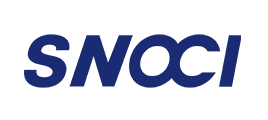Far infrared reflow soldering
The far-infrared reflow soldering used in the 1980s has the characteristics of fast heating, energy saving, and smooth operation. However, due to the different materials and colors of printed boards and various components, there are significant differences in their radiation heat absorption rates, resulting in uneven temperatures in different components and parts of the circuit, namely local temperature differences. For example, the black plastic packaging of integrated circuits may overheat due to high radiation absorption, while the soldering area - the silver white lead - may experience false soldering due to low temperature. In addition, areas on the printed circuit board where thermal radiation is blocked, such as soldering pins in shaded areas of large (high) components or small components, can cause poor soldering due to insufficient heating.
1.2 Full hot air reflow soldering
Full hot air reflow soldering is a welding method that uses convection jet nozzles or heat-resistant fans to force airflow circulation, thereby achieving heating of the welded parts. This type of device began to rise in the 1990s. Due to the use of this heating method, the temperature of the printed circuit board and components approaches the gas temperature of the given heating temperature zone, completely overcoming the temperature difference and shielding effect of infrared reflow soldering. Therefore, it is currently widely used. In all hot air reflow soldering equipment, the convective velocity of the circulating gas is crucial. To ensure that the circulating gas acts on any area of the printed board, the airflow must have a sufficiently fast speed. This can easily cause shaking of the printed circuit board and displacement of components to a certain extent. In addition, using this heating method is inefficient and consumes more electricity in terms of heat exchange.
1.3 Infrared hot air reflow soldering
This type of reflow soldering furnace is an ideal heating method currently, which adds hot air to the IR furnace to make the temperature inside the furnace more uniform. This type of equipment fully utilizes the strong penetration power of infrared radiation, with high thermal efficiency and energy saving. At the same time, it effectively overcomes the temperature difference and shielding effect of infrared reflow soldering, and compensates for the impact of hot air reflow soldering on gas flow rate requirements. Therefore, this IR+Hot reflow soldering is currently the most commonly used internationally.
With the increase of assembly density and the emergence of fine pitch assembly technology, nitrogen protected reflow soldering furnaces have also emerged. Welding under nitrogen protection can prevent oxidation, improve welding wetting force, accelerate wetting speed, provide greater correction force for misaligned components, reduce welding beads, and is more suitable for non cleaning processes.
Establishment of Temperature Curve 2
The temperature curve refers to the curve of the temperature at a certain point on the SMA as it passes through the reflow oven over time. The temperature curve provides an intuitive method to analyze the temperature changes of a component throughout the entire reflow soldering process. This is very useful for achieving better weldability, avoiding damage to components due to overheating, and ensuring welding quality.
The following is a brief analysis starting from the preheating stage.
2.1 Preheating section
The purpose of this area is to heat the PCB at room temperature as soon as possible to achieve the second specific goal, but the heating rate should be controlled within an appropriate range. If it is too fast, it may cause thermal shock and damage to the circuit board and components; If it is too slow, the solvent will not evaporate sufficiently, which will affect the welding quality. Due to the fast heating rate, there is a significant temperature difference within the SMA in the later stage of the temperature range. To prevent damage to components caused by thermal shock, a higher speed of 4 ℃/s is generally specified. However, the usual rate of increase is set at 1-3 ℃/s. The typical heating rate is 2 ℃/s.
2.2 Insulation section
The insulation section refers to the area where the temperature rises from 120 ℃ -150 ℃ to the melting point of the solder paste. The main purpose is to stabilize the temperature of each component inside the SMA and minimize temperature differences. Give enough time in this area to allow the temperature of larger components to catch up with smaller components, and ensure that the flux in the solder paste evaporates sufficiently. At the end of the insulation section, the oxide on the solder pads, solder balls, and component pins is removed, and the temperature of the entire circuit board reaches equilibrium. It should be noted that all components on SMA should have the same temperature at the end of this section, otherwise entering the reflow section will result in various poor soldering phenomena due to uneven temperature in each part.
2.3 Reflux section
The temperature of the heater is set higher in this area, causing the temperature of the components to quickly rise to the peak temperature. The peak soldering temperature in the reflow section varies depending on the solder paste used, and it is generally recommended to add 20-40 ℃ to the melting point temperature of the solder paste. For 63Sn/37Pb solder paste with a melting point of 183 ℃ and Sn62/Pb36/Ag2 solder paste with a melting point of 179 ℃, the peak temperature is generally 210-230 ℃, and the reflow time should not be too long to prevent adverse effects on SMA. The ideal temperature curve is the minimum area covered by the "zone" that exceeds the melting point of solder
本文转自电子工程世界:http://www.eeworld.com.cn/gykz/2011/0707/article_6969.html


